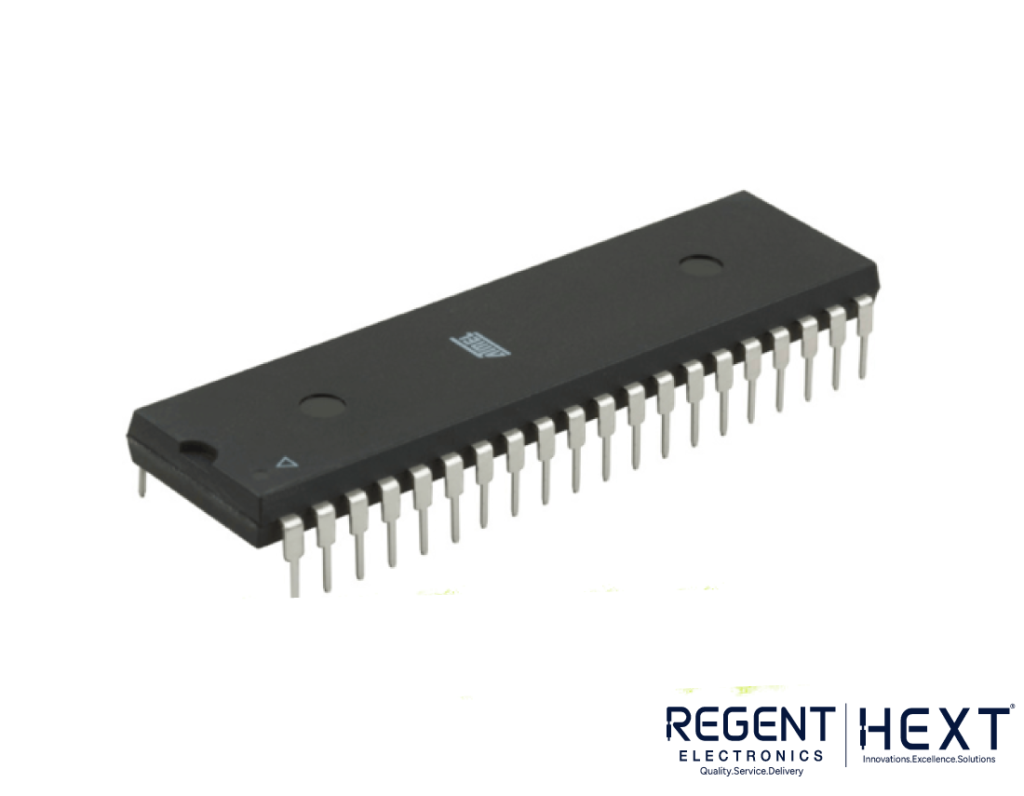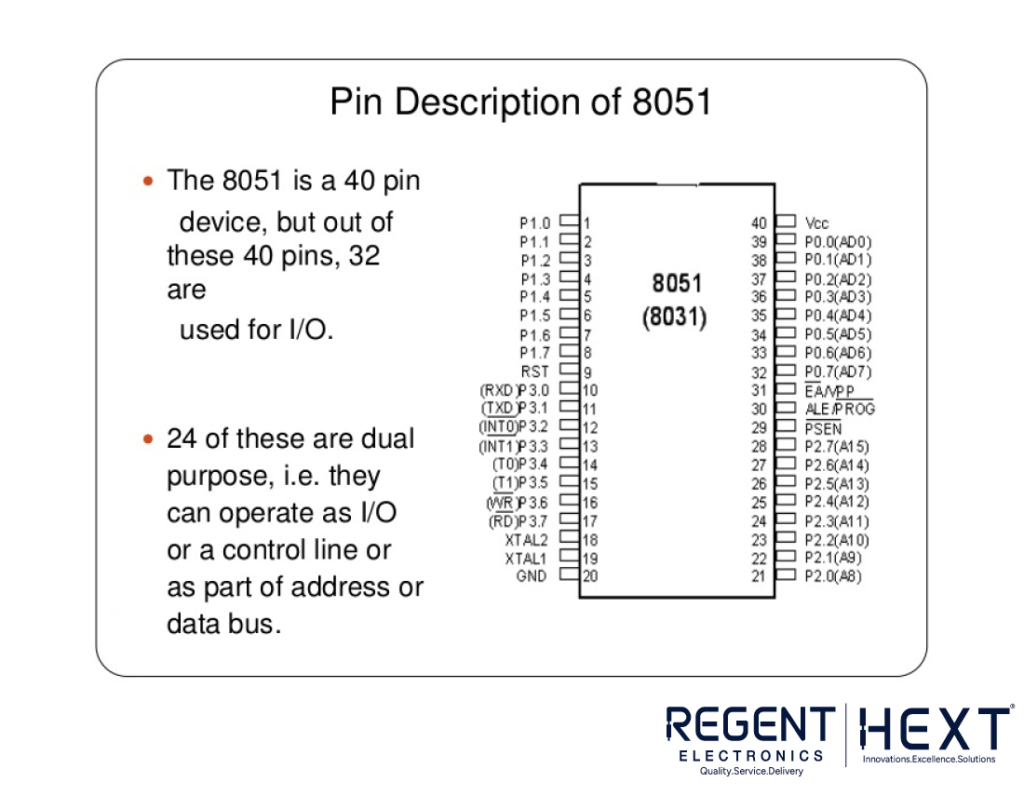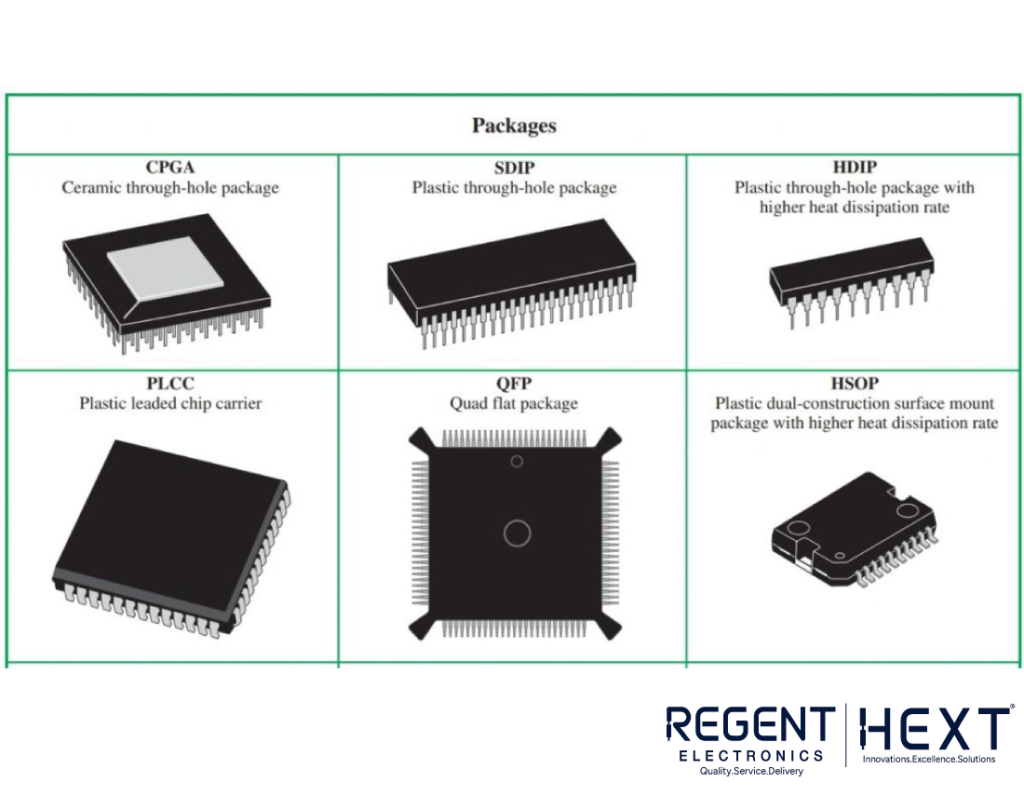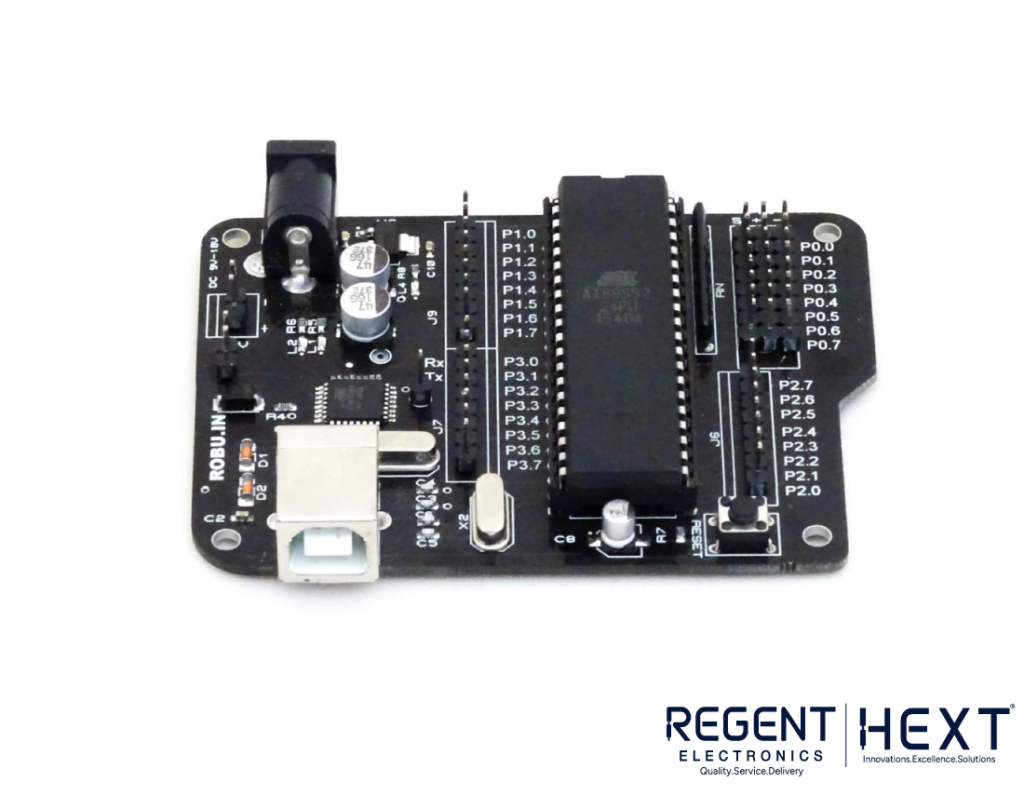
8051 Microcontroller: Basics, Features, Packaging, and Applications
Introduction
The 8051 microcontroller is one of the most widely recognized microcontrollers, commonly used in embedded systems, consumer electronics, automobiles, and various industrial applications. In this article, we will explore the basics, features, packaging types, and applications of the 8051 microcontroller.
What is an 8051 Microcontroller?

The 8051 microcontroller, originally developed by Intel in 1980, belongs to the MCS-51 family. Though newer microcontrollers have emerged, the 8051 remains a popular choice for learning and development in embedded systems.
Key Features of the 8051 Microcontroller

- 8-Bit ALU: The Arithmetic Logic Unit (ALU) is the heart of a microcontroller, performing arithmetic and logic operations. The 8051 features an 8-bit ALU, meaning it processes 8-bit data at a time.
- 8-Bit Accumulator: An essential register for arithmetic and logic operations, used extensively in calculations.
- RAM: The 8051 microcontroller has 128 bytes of internal RAM, including Special Function Registers (SFRs) and Input/Output (I/O) port registers.
- ROM: It has 4KB of on-chip Read-Only Memory (ROM) for storing programs.
- I/O Ports: The 8051 includes four 8-bit bidirectional I/O ports, making it highly versatile.
- Timers/Counters: Two 16-bit timers/counters enable precise timing and counting functions.
- Serial Communication: The 8051 supports full-duplex Universal Asynchronous Receiver/Transmitter (UART) communication.
- External Memory Support: It can access up to 64KB of external memory for both RAM and ROM.
- Additional Features: The microcontroller also includes interrupts, an on-chip oscillator, a Boolean processor, and a power-down mode for energy efficiency.
Note: Some specifications, such as RAM and ROM size, vary depending on the manufacturer.
Packaging Types of 8051 Microcontroller

The 8051 microcontroller is available in multiple packaging types, making it suitable for different applications.
Common Packaging Types
- Dual In-line Package (DIP): A 40-pin PDIP (Plastic Dual In-line Package) is the most commonly used version for prototyping and development.
- Plastic Leaded Chip Carrier (PLCC): A 44-lead PLCC, commonly used in compact devices.
- Thin Quad Flat Package (TQFP): A 44-lead TQFP, suitable for surface-mount applications in space-constrained environments.
Applications of 8051 Microcontroller

Despite the development of more advanced microcontrollers, the 8051 continues to be widely used in various applications, including:
Consumer Electronics
- TV tuners
- Remote controls
- Sewing machines
- Computers
Home Automation
- Smart TVs
- Video games
- Home security systems
- Garage door openers
Communication Systems
- Mobile phones
- Intercom systems
- Answering machines
- Paging devices
Office Equipment
- Fax machines
- Printers
- Copiers
- Laser printers
Automotive Systems
- Airbag deployment
- Anti-lock braking systems (ABS)
- Engine control
- Temperature control
- Keyless entry
Medical Equipment
- Patient monitoring systems
- Diagnostic tools
Industrial Automation
- Robotics
- Process and flow control
- Remote sensing
Aerospace and Defense
- Military-grade systems
- Space applications
Networking and Radio Equipment
- Wireless communication modules
- IoT devices
Conclusion
The 8051 microcontroller, despite being an older technology, remains a reliable choice for learning and development in embedded systems. Its simplicity, ease of use, and robust features make it a great option for various applications, from consumer electronics to industrial automation. Whether you are a beginner or an experienced developer, understanding the 8051 microcontroller can provide a strong foundation for working with modern microcontrollers.
Stay tuned for more insightful articles on microcontrollers and embedded systems. See you in the next post!
